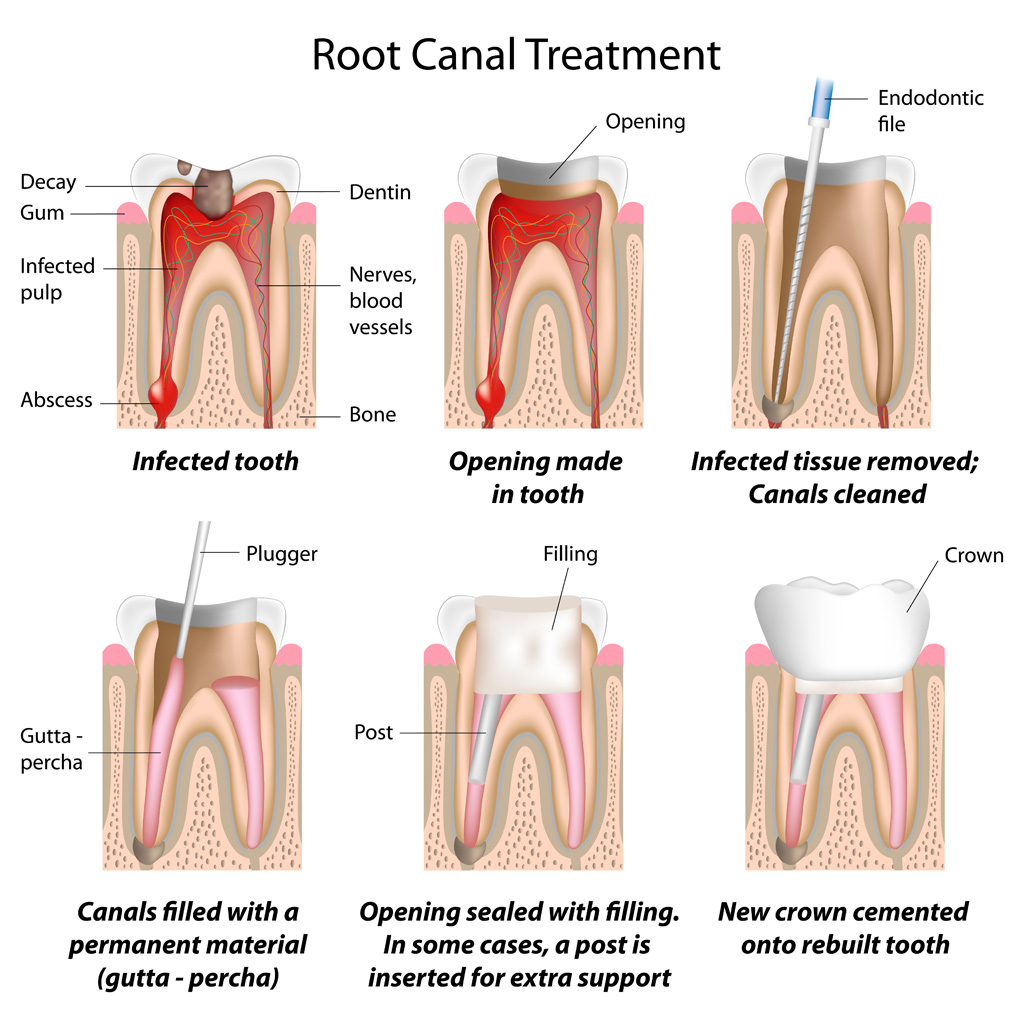WHAT IS ROOT CANAL TREATMENT?
Root Canal Treatment
Root canal treatment is done when decay will likely damage or has already killed a tooth. During a root canal, a dentist removes the pulp from the center of a tooth and fills the pulp cavity. This can prevent the development of a painful infection in the pulp that may spread to other teeth. A root canal can also treat an infection that has developed into an abscessed tooth. This procedure can relieve toothache, stop infection, and promote healing.
- First, the dentist will numb your gums with a substance that feels like jelly. After your gums are numb, the dentist will inject a local anesthetic that will completely numb the teeth, gums, tongue, and skin in that area. Sometimes nitrous oxide gas will be used to reduce pain and help you relax.
- The dentist may separate the decayed tooth from the other teeth with a small sheet of rubber on a metal frame. This protective rubber sheet also helps stop liquid and tooth chips from entering your mouth and throat.
- The dentist will use a drill and other tools to remove the pulp from the tooth and will fill the inside part of the tooth below the gum line with medicines, temporary filling materials, and a final root canal filling.
- After the root canal, a permanent filling or crown (cap) is often needed. If a crown is needed, the dentist removes the decay and then makes an impression of the tooth. A technician uses the impression to make a crown that perfectly matches the drilled tooth.
- The tooth may be fitted with a temporary crown until the permanent crown is made and cemented into place.



